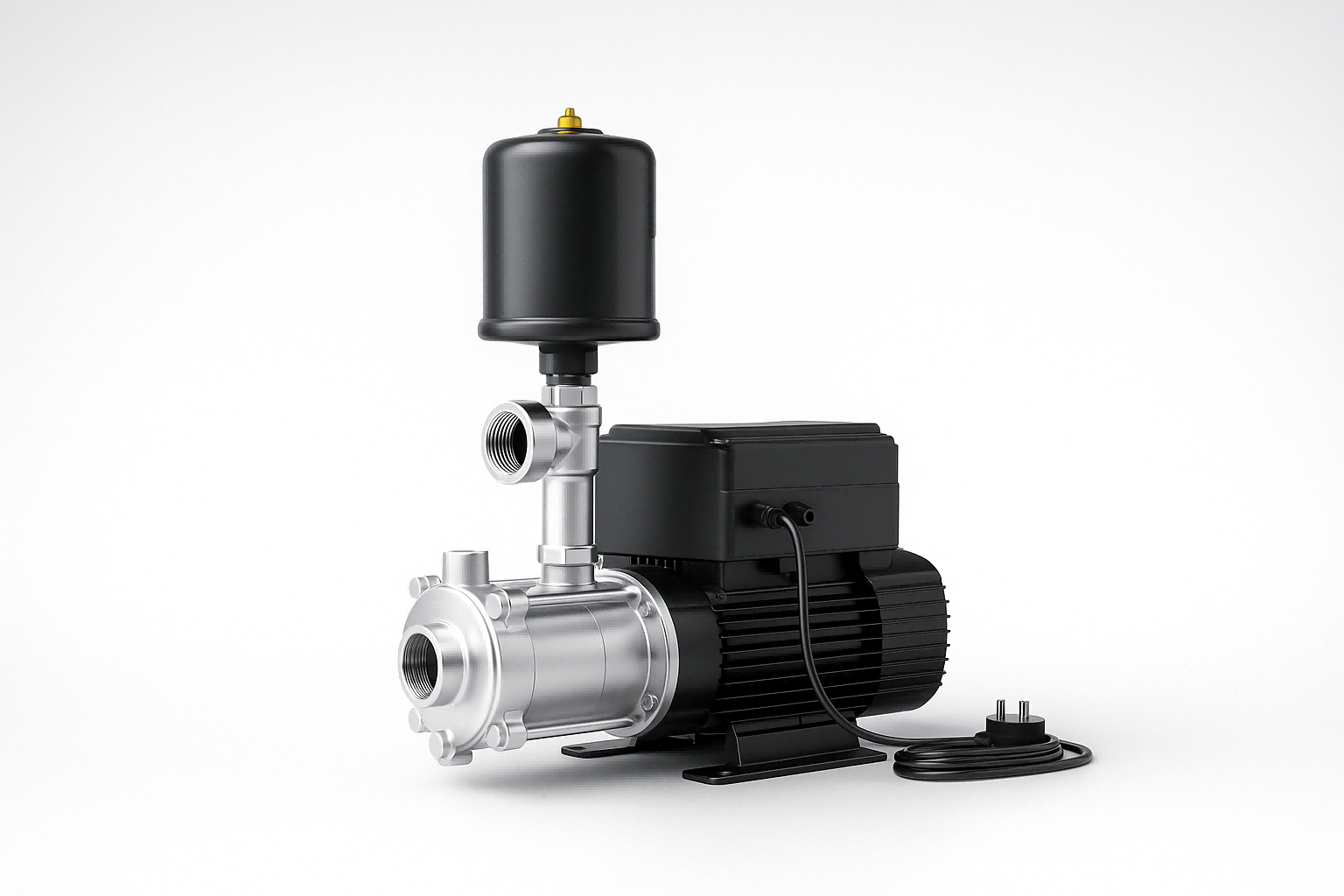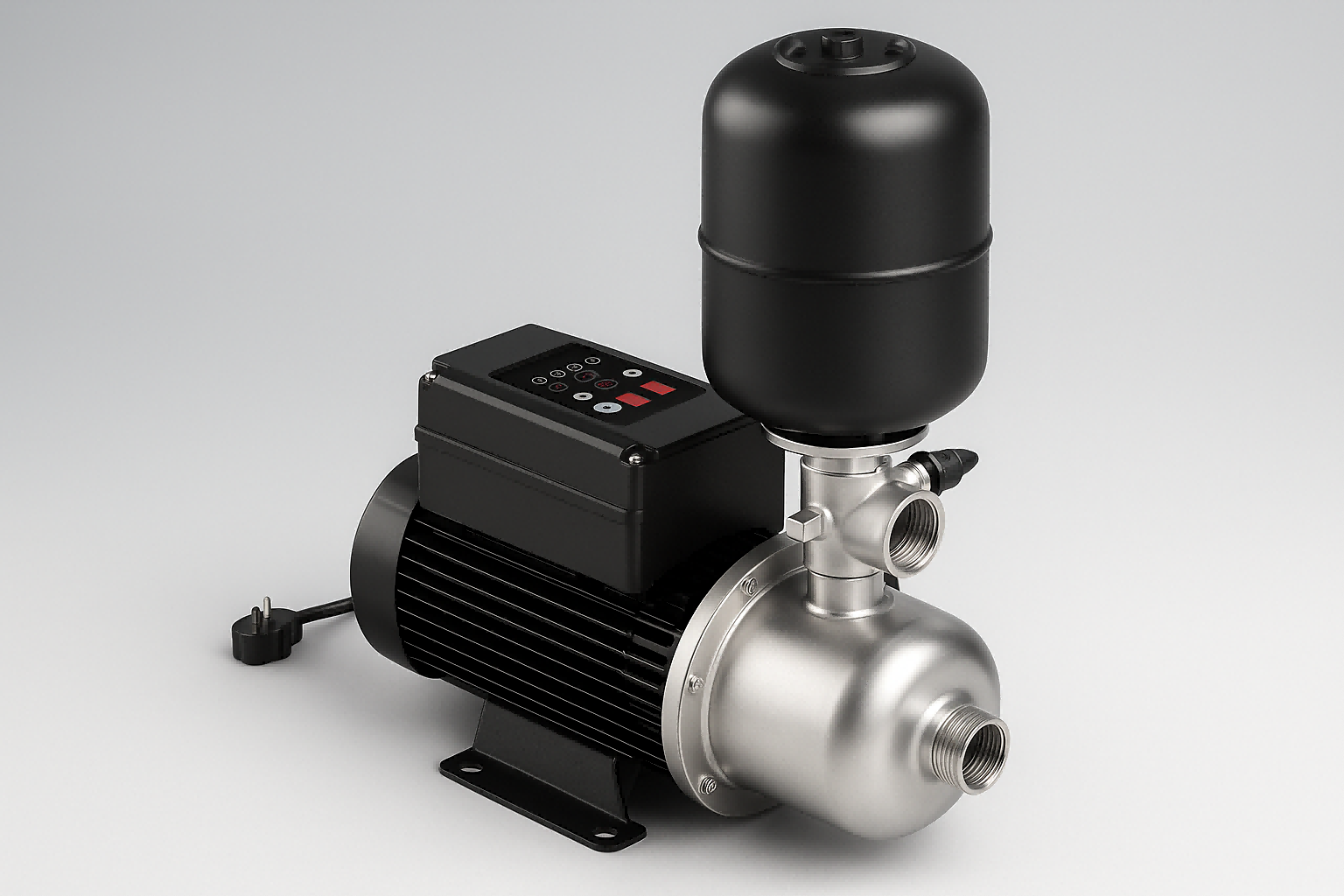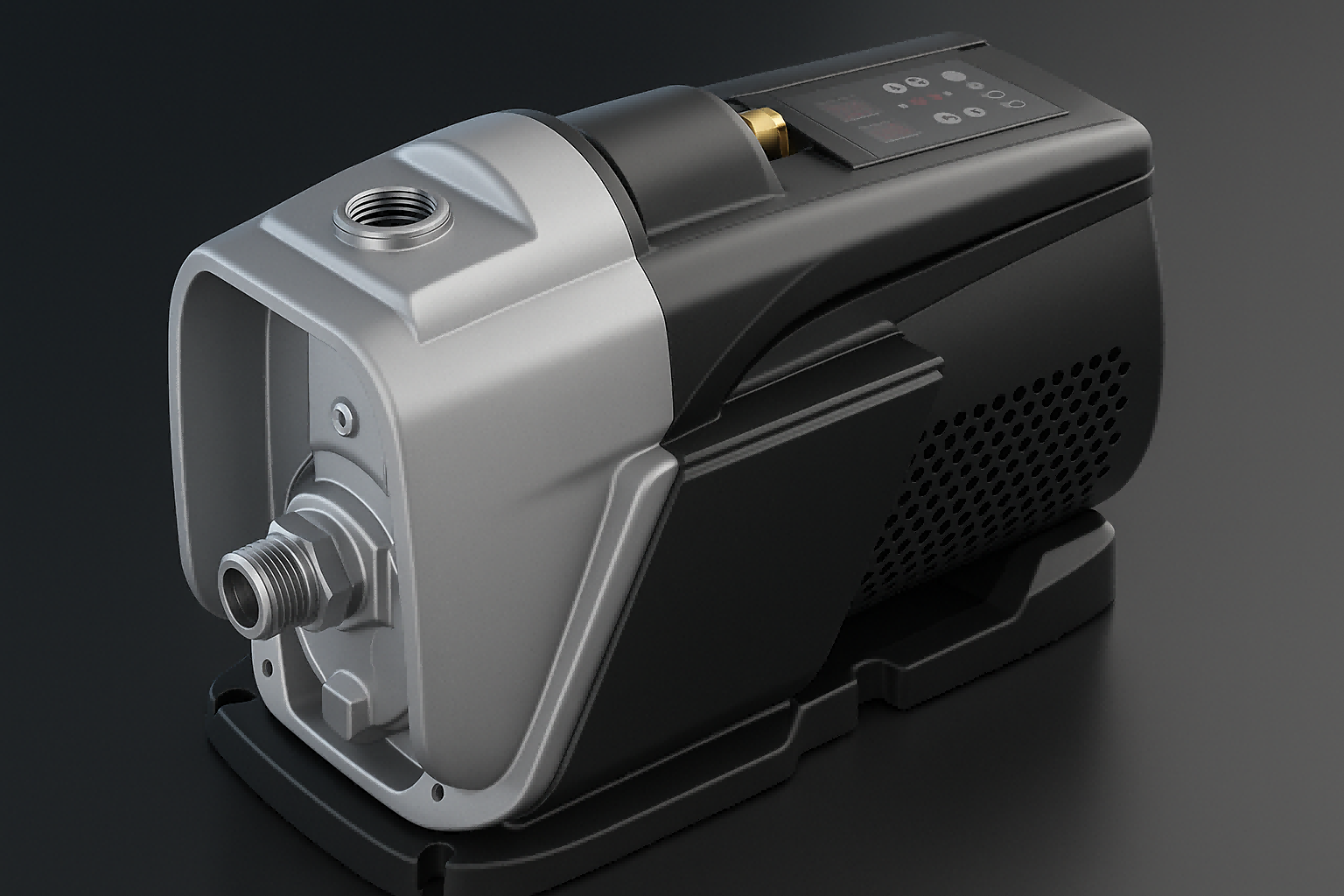Is a struggling water pump causing downtime and frustration?
These issues disrupt operations and lead to costly repairs.
Understanding the root causes helps prevent future failures and maintain system efficiency.
The most common water pump problems include overheating, leaking seals, low water pressure, excessive noise, and cavitation. These issues often stem from lack of maintenance, worn components, improper installation, or system imbalances. Identifying the specific symptoms is the first step toward an effective solution.

A reliable water pump is the heart of many residential, commercial, and industrial systems.
When it falters, the consequences can range from a minor inconvenience to a major operational shutdown.
Knowing how to spot the early warning signs of a problem can save you significant time, money, and stress.
This guide will walk you through the most frequent issues that affect water pumps, helping you diagnose the cause and find the right solution to keep your system running smoothly.
Overheating
Is your water pump running dangerously hot?
This can lead to premature wear and catastrophic failure.
Ignoring the heat buildup only makes the problem worse, risking permanent damage to the motor.
Overheating in water pumps is commonly caused by high ambient temperatures, insufficient lubrication, or a faulty thermostat. Symptoms include strange noises, reduced output, and visible leaks. Regular maintenance, ensuring proper lubrication and adequate ventilation, is crucial for prevention.
An overheated pump is a clear sign that something is critically wrong within your water system.
It's not just a standalone issue; it's a symptom that points to deeper mechanical or environmental problems that demand immediate attention.
Let's explore the causes in more detail and outline the steps you can take to diagnose and resolve them effectively.
A pump that runs too hot is working harder than it should, consuming more energy and putting excessive strain on its internal components, which drastically shortens its operational life.
Understanding the Causes of Overheating
Several factors can contribute to a pump running hotter than its specified limits.
Identifying the correct cause is essential for applying the right fix.
- High Ambient Temperatures: The environment where the pump operates plays a huge role. If a pump is in a poorly ventilated room or exposed to direct sunlight, the surrounding air cannot effectively draw heat away from the motor.
- Lack of Lubrication: Lubrication is vital for reducing friction between moving parts, such as bearings. When oil or grease levels are low, friction increases exponentially, generating excessive heat that can damage the motor windings and bearings.
- Malfunctioning Thermostat: In systems that use coolant, like engine pumps, the thermostat regulates temperature. If it gets stuck in the closed position, coolant cannot circulate properly, causing the system to overheat rapidly.
Diagnostic Steps and Solutions
To properly address an overheating issue, a systematic approach is necessary.
Start with the simplest checks and move toward more complex possibilities.
It is important to disconnect the power supply to the pump before performing any inspection or maintenance.
| Cause | Symptom | Solution |
|---|---|---|
| High Ambient Temperature | The entire pump housing is hot to the touch. | Improve ventilation, install a cooling fan, or shade the pump from direct sun. |
| Lack of Lubrication | Grinding or squealing noises. | Check oil or grease levels and refill according to the manufacturer's specifications. |
| Stuck Thermostat | The pump overheats quickly after starting. | Test the thermostat and replace it if it fails to open at the correct temperature. |
| Overworking/High Demand | The pump runs constantly without cycling off. | Ensure the pump is correctly sized for the application; check for leaks in the system. |
Preventive Maintenance for Overheating
Prevention is always better than a cure.
A regular maintenance schedule is the most effective way to prevent overheating.
Create a checklist for routine inspections:
- Check Lubrication Levels: Monthly, check the oil levels in the pump's bearings and motor.
- Inspect Ventilation: Ensure that air vents are clear of dust, debris, and any obstructions that could block airflow.
- Monitor Operating Temperature: If possible, use an infrared thermometer to periodically check the pump's operating temperature to establish a baseline. A sudden spike indicates a developing problem.
- Listen for Unusual Noises: Your ears are a great diagnostic tool. Any change in the pump's operating sound, like grinding or whining, warrants an immediate investigation.
By staying proactive, you can catch potential overheating issues before they cause significant damage, ensuring your pump operates efficiently for years to come.
Leakage
Are you noticing puddles of water around your pump?
A seemingly small leak can signal a serious internal problem.
Ignoring it can lead to water damage, reduced efficiency, and eventual pump failure.
Water pump leakage is typically caused by worn-out seals, corroded components, or loose connections. Evidence of a leak includes visible water spots, reduced water flow, and unusual noises. The solution involves replacing faulty parts, tightening all connections, and applying sealant where necessary.
A leak is one of the most common and visible signs of a water pump problem.
While it may start small, any uncontrolled release of water is a problem that will likely worsen over time.
It wastes water, can cause damage to the pump's electrical components and surrounding area, and indicates that the integrity of the system has been compromised.
Let's break down the common culprits behind leaks and how to address them head-on.
Identifying the Source of the Leak
Finding exactly where the water is coming from is the first critical step.
Leaks can originate from several different points on the pump and its connected plumbing.
- Worn-Out Seals: Mechanical seals and gaskets are designed to prevent water from escaping where moving parts (like the pump shaft) and stationary parts meet. Over time, these seals can become brittle, crack, or wear down from friction, allowing water to seep out.
- Loose Connections: The vibrations from a running pump can sometimes cause fittings, bolts, and connections to loosen over time. A leak can occur at any point where pipes connect to the pump body if the connection is not secure.
- Corrosion: If the pump housing is made of a material susceptible to rust, corrosion can eat away at the metal, creating weak spots or even holes. This is more common in older pumps or those handling corrosive fluids.
How to Fix a Leaking Pump
Once you have identified the source, you can take the appropriate steps to fix it.
Always turn off the power and relieve any pressure in the system before starting work.
| Leak Source | Common Cause | Recommended Action |
|---|---|---|
| Shaft Seal | Seal has dried out, cracked, or worn down. | Disassemble the pump to access and replace the mechanical seal assembly. |
| Pipe Fittings | Loose threads or failed sealant. | Disconnect, clean the threads, apply new thread sealant, and tighten securely. |
| Pump Casing/Housing | Crack from freezing or impact; corrosion. | A small crack may be repaired with epoxy, but a replacement housing is often necessary. |
| Gaskets/O-Rings | The rubber has become compressed or brittle. | Remove the old gasket, clean the mating surfaces, and install a new, correctly sized gasket. |
Preventing Future Leaks
Proactive maintenance can dramatically reduce the likelihood of future leaks.
Regular inspections are key to catching potential issues before they escalate.
Incorporate these checks into your maintenance routine:
- Inspect Seals: Look for any signs of dripping around the pump shaft. Some seals are designed to have a very slow drip for lubrication, but anything more than that is a problem.
- Check Connections: On a monthly basis, visually inspect and manually check all fittings and bolts to ensure they are tight. Do not overtighten, as this can damage threads or gaskets.
- Monitor Water Quality: If you are pumping water with high mineral content or sediment, consider installing a pre-filter. Abrasive particles in the water can accelerate the wear of seals and impellers.
- Protect from Freezing: In cold climates, ensure the pump is properly winterized or protected from freezing temperatures, as expanding ice can easily crack the pump housing.
By carefully monitoring your pump and addressing small drips promptly, you can prevent them from turning into system-disabling failures.
Low Water Pressure
Are you frustrated by weak showers and slow-filling faucets?
Low water pressure can make simple daily tasks a struggle.
This issue could be a sign that your water pump is not performing as it should.
Low water pressure is often caused by clogged pipes, a damaged impeller, or air pockets within the pump system. Key symptoms include a weak flow from outlets, reduced spray height, or a hammering sound in the pipes. Fixing this requires clearing blockages, repairing the impeller, or purging air from the system.
Low water pressure is a problem that directly impacts your quality of life and the functionality of your water system.
A booster pump's primary job is to increase pressure, so when it fails to do so, it's a clear indicator of an underlying issue.
This problem not only affects convenience but can also signal issues that could be harming the pump itself.
Let's investigate the common causes and how you can restore your water pressure to optimal levels.
Diagnosing the Cause of Low Pressure
Several distinct issues can lead to a drop in water pressure.
A process of elimination can help you pinpoint the exact culprit.
- Clogged Pipes or Filters: Over time, sediment, rust, and mineral deposits can build up inside your pipes, restricting water flow and causing a pressure drop. A clogged well screen or sediment filter can have the same effect.
- Damaged Impeller: The impeller is the spinning component inside the pump that flings water outward, creating pressure. If its blades are worn, clogged with debris, or broken, it cannot move water effectively, resulting in poor pressure.
- Air Pockets: Air can sometimes get trapped in the pump or pipes, a condition known as being "air-locked." These air pockets disrupt the smooth flow of water and can cause sputtering faucets and significantly reduced pressure.
- A Leak in the System: Even a small leak somewhere in your plumbing system means that not all the water being pumped is reaching your faucets. This loss of volume translates directly into a loss of pressure.
Steps to Improve Water Pressure
Once you suspect a cause, you can take specific actions to remedy the problem.
| Problem Area | Potential Cause | How to Fix It |
|---|---|---|
| Plumbing | Clogged pipes, faucets, or filters. | Clean aerators and showerheads. Flush the system or call a plumber for extensive blockages. Replace filters. |
| Pump Internals | Damaged or worn impeller. | Disassemble the pump to inspect the impeller. Clean off any debris or replace it if blades are damaged. |
| System Air | Air pockets in the pump or lines. | Bleed the air from the system. Most pumps have an air release valve for this purpose. You may need to re-prime the pump. |
| Well System | Low water level in the well. | The pump may be drawing in air. Lowering the pump or allowing the well to recover may be necessary. |
| Pressure Switch | Incorrectly set or faulty switch. | The pressure switch tells the pump when to turn on and off. Adjusting its settings can increase pressure, but must be done carefully. |
Long-Term Solutions for Consistent Pressure
Maintaining good water pressure involves both fixing immediate problems and ensuring the long-term health of your system.
Consider these strategies:
- Regularly Clean Filters: Make cleaning or replacing sediment filters a part of your routine maintenance. This is one of the easiest ways to prevent gradual pressure loss.
- Install a Pressure Tank: For well systems, a properly functioning pressure tank is crucial. It acts as a reservoir, reducing how often the pump needs to cycle and preventing rapid pressure fluctuations.
- Check for Leaks: Periodically inspect your plumbing for any signs of leaks, especially in less-visible areas like crawl spaces or basements.
- Ensure Correct Pump Size: If low pressure has always been an issue, your pump might be undersized for your home's demand. A professional evaluation can determine if an upgrade is needed.
By systematically troubleshooting and maintaining your water system, you can ensure a strong, steady flow of water whenever you need it.
Noisy Operation
Is your water pump making a rattling, grinding, or squealing sound?
Unusual noises are a clear warning that something is wrong.
Ignoring these sounds can lead to a sudden and complete breakdown of the unit.
Noisy pump operation is typically caused by worn-out bearings, loose components, or misaligned parts. The specific sound—be it rattling, squeaking, or grinding—can help diagnose the issue. Resolving the noise involves tightening components, replacing bearings, or realigning the pump and motor.
A pump that operates quietly is usually a healthy pump.
When it starts making excessive noise, it's an auditory signal of mechanical distress.
These sounds are more than just an annoyance; they are symptoms of friction, vibration, or impact that is causing damage to the pump's internal components.
Addressing the noise promptly is key to preventing a minor issue from becoming a major expense.
Let's tune in to what these sounds mean and how to silence them.
Decoding Pump Noises
Different sounds can point to different problems.
Learning to distinguish between them can help you narrow down the cause much faster.
- Grinding or Rumbling: This noise often indicates worn-out bearings. Bearings allow the pump shaft to spin smoothly, and when they fail, the resulting friction creates a harsh, grinding sound. It can also be a sign of cavitation.
- Rattling: A rattling sound usually means something is loose. This could be mounting bolts, loose components inside the pump, or debris like small stones or sediment bouncing around inside the pump housing.
- Squealing or Squeaking: A high-pitched squeal is often related to misaligned parts. If the pump and motor shafts are not perfectly aligned, it puts stress on the bearings and seals, causing them to squeak in protest.
How to Fix a Noisy Pump
Fixing a noisy pump involves a hands-on approach to find and correct the mechanical fault.
Always disconnect power before beginning any work.
Common Pump Noises and Their Solutions
| Sound | Likely Cause | Solution |
|---|---|---|
| Grinding/Rumbling | Worn-out bearings or cavitation. | Replace the pump's bearings. If cavitation is suspected, check for blockages on the suction side or low inlet pressure. |
| Rattling | Loose components or debris. | Tighten all mounting bolts and fasteners. Open the pump housing to inspect for and remove any foreign objects. |
| Squealing/Squeaking | Misaligned pump and motor shafts. | Perform a precision alignment of the pump and motor. Check for a worn drive belt if applicable. |
| Vibration/Humming | Imbalance or incorrect mounting. | Ensure the pump is mounted securely on a level, stable base. Vibration isolators can also be installed to dampen noise. |
Preventing Noisy Operation in the Future
A quiet pump is a well-maintained pump.
Following best practices during installation and maintenance is the best way to prevent noise problems.
Follow these preventative tips:
- Proper Installation: Ensure the pump is installed on a solid, flat foundation. An uneven base is a primary cause of vibration and misalignment.
- Regular Alignment Checks: For pumps with separate motors, shaft alignment should be checked as part of your annual maintenance schedule. Laser alignment tools offer the highest precision.
- Routine Lubrication: Proper bearing lubrication is essential. Follow the manufacturer's guide for the type of lubricant and the frequency of application to prevent premature bearing failure.
- Keep it Clean: Periodically check the pump's intake to ensure it is free from debris that could be pulled into the unit and cause rattling or damage the impeller.
By listening to your pump and responding to any new noises, you can ensure its long-term health and quiet, efficient operation.
Cavitation
Do you hear a noise like gravel or marbles rattling inside your pump?
This dangerous phenomenon, known as cavitation, is severely damaging.
It can quickly destroy your pump's impeller and other internal components if left unchecked.
Cavitation occurs when low pressure in the pump creates vapor bubbles that violently collapse, or implode. This causes noise, vibration, and significant damage to the impeller. To prevent cavitation, you must increase the suction pressure, reduce the pump's speed, or use an impeller designed for low-pressure conditions.
Cavitation is one of the most destructive forces that can act on a water pump.
It's a complex hydraulic issue that sounds like the pump is trying to move rocks, but it's actually caused by the formation and collapse of tiny water vapor bubbles.
The implosion of these bubbles creates intense shockwaves that chip away at the impeller's surface, leading to rapid wear, loss of performance, and eventual failure.
Understanding how to prevent this is vital for pump longevity.
What Causes Cavitation?
Cavitation is fundamentally a pressure problem.
It happens when the pressure of the liquid at the pump's inlet (the suction side) drops below its vapor pressure.
- Insufficient Suction Head (NPSHa): The most common cause. The available pressure at the pump inlet is not high enough to keep the water from boiling at a low temperature. This can be due to a clogged intake pipe, a suction line that is too long or narrow, or the pump being positioned too far above the water source.
- High Liquid Temperature: Warmer water turns to vapor (boils) at a lower pressure than cold water. Pumping hot liquids makes a system more susceptible to cavitation.
- High Pump Speed: Running a pump too fast can cause the pressure at the eye of the impeller to drop dramatically, triggering the formation of vapor bubbles.
- Sharp Bends in Piping: Too many sharp elbows or restrictions close to the pump's suction inlet can create turbulence and localized low-pressure zones.
Identifying and Resolving Cavitation
The signs of cavitation are distinct and should be addressed immediately to prevent irreparable damage.
| Symptom | Description | Solution |
|---|---|---|
| Loud, Rumbling Noise | Sounds like gravel or marbles are passing through the pump. | This is the sound of vapor bubbles imploding. Action is required immediately. |
| Vibration | The pump vibrates excessively during operation. | The shockwaves from cavitation cause intense vibration, which can damage bearings and seals. |
| Reduced Performance | A noticeable drop in flow rate and discharge pressure. | The vapor bubbles disrupt the smooth flow of water through the pump, reducing its efficiency. |
| Impeller Damage | Pitting and erosion on the impeller vanes upon inspection. | This confirms cavitation is occurring. The impeller will need to be replaced. |
To fix cavitation, you need to raise the Net Positive Suction Head Available (NPSHa) so that it is higher than the pump's required NPSH (NPSHr):
- Increase Suction Pressure: Raise the water level in the supply tank, lower the pump's position relative to the water source, or increase the diameter of the suction pipe to reduce friction losses.
- Clean the Suction Line: Remove any blockages from the suction pipe, filters, or valves that could be restricting flow.
- Reduce Pump Speed: If you have a variable speed drive, slowing the pump down will reduce the required NPSH and can stop cavitation.
- Check Liquid Temperature: If possible, lower the temperature of the fluid being pumped.
Cavitation is a serious threat to the health of your pump.
By ensuring your system is designed and maintained correctly, especially on the suction side, you can avoid this destructive problem entirely.
Conclusion
Understanding these common water pump problems is the first step toward ensuring reliable operation.
Regular maintenance, prompt diagnosis, and proper repairs can extend your pump's life and prevent costly downtime.
Frequently Asked Questions (FAQs)
What are the signs of a bad water pump?
Signs of a bad water pump include overheating, leaks, unusual noises like grinding or whining, low water pressure, and steam coming from the engine in vehicle applications.
How do I know if my pump is failing?
You can tell your pump is failing if you notice a sudden drop in water pressure, the pump cycles on and off too frequently, or it starts making loud, unusual noises.
What causes a pump to stop working?
A pump can stop working due to a loss of power, a tripped circuit breaker, motor failure, a clogged intake, or a major internal component failure like a seized bearing.
How do you diagnose pump problems?
To diagnose pump problems, start by checking for power. Then, listen for strange noises, look for leaks, check the water pressure, and inspect filters and intake lines for blockages.
What happens when a pump fails?
When a pump fails, it will stop moving water. This results in a complete loss of water supply to fixtures, potential for water damage if it fails by leaking, and system shutdown.
Can a water pump be repaired?
Yes, many water pump issues can be repaired. Common repairs include replacing worn seals and bearings, tightening loose connections, or swapping out a faulty pressure switch or motor.
Why would a water pump lose pressure?
A pump can lose pressure due to a leak in the system, a clogged filter or pipe, a worn or damaged impeller, or air getting into the lines, which disrupts water flow.







